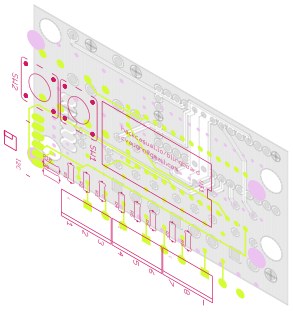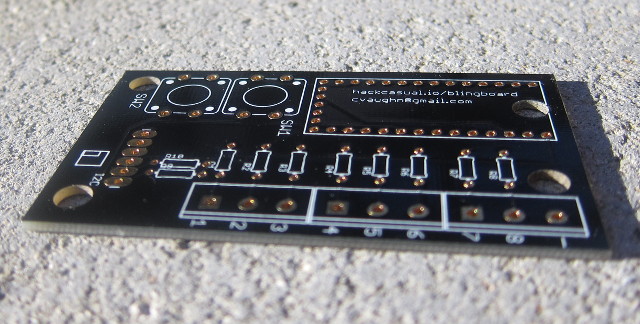FRC3574's Bling Board

Contents
Introduction
The bling board is based on the documentation provided for the OctoWS2811 library. It leverages the work done for that library to drive up to 4000 LEDs using a Teensy 3.1 development board.
I2C
An NXT compatible I2C breakout is on the board, however I haven’t tested it.

Files
Licensed under CC-BY.
File contains gerbers sent to Seeed for the initial production run, as well as the schematic and board file for Eagle

Notes on Production: If you’re making a small run, I would recommend OSHPark, the price I’ve been quoted was ~$25 for 3, and includes free shipping. They also include ENIG coating in the price. For larger runs, Seeed is hard to beat.
Bill of Materials
- 1 x Teensy 3.1. A teensy 3.0 should work as well, but if you’re buying new, there’s no good reason not to use the 3.1
- 8 x 120 ohm resistors (signal filtering)
- 3 x 3 position 5mm screw terminals
- 2 x 14 male header pins
- 2 x 14 female header pins
Optional
- 2x 12mm tactile switches
- 2x 1.4kohm i2c pullup resistors
- 1x NXT i2c cable
Switches are connected to pins 9 (SW1), and 10 (SW2)
Notes on Signal Filter Resistors: During a competition we ended up with all but 1 working strip. Investigating the failure we found all the first LED in each strip dead. I believe the cause of this is transient voltage spikes on the data lines. Our current approach is to use filter resistors directly connected at the strip end, not the board end. In this case, replace the 120 ohm resistors with 0 ohm (ie. short lengths of wire)
3574’s Strip


